|
|
|

|
This is the follow-up page to the "Before demolition" page. On Monday, April 2, 2001, Roy Morrell of Denison Environmental Services and Project manager of the clean-up, invited me to visit the rehabilitated site. This is a record of what I saw that day.
Text of article in the Atikokan Progress. |
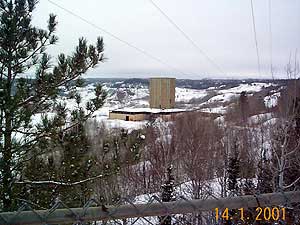 |
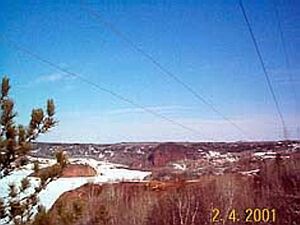 Both these pictures were taken from the same place |
 Roy Morrelli of Denison Environmental Services, Project Manager of clean-up |
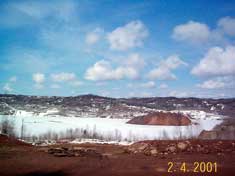 The office building used to be right here |
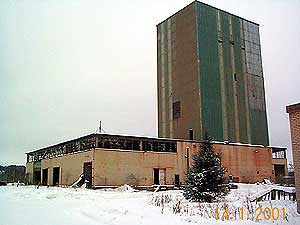 |
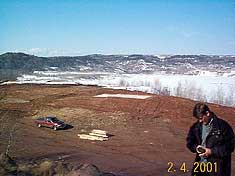 The headframe used to be here. The concrete caps the shaft. |
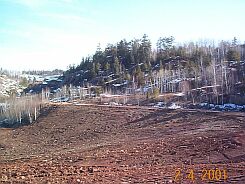 The office used to be here and used to look like the photo on the right |
 |
|
Caland: Giving it back The call came late in the day on Friday afternoon from Roy Morrell, project manager of Denison Environmental Services, the contractor responsible for the decommissioning and clean-up of the part of the former Caland site containing the headframe and offices building. He suggested that I make a trip out to the minesite to see what it looks like now, after the clean-up. He remembered that I had visited the site prior to the demolition, took pictures of the derelict buildings and wrote a rather emotional article about the state of the site and the condition of the buildings. I was very intrigued with the idea of returning to the site to make a comparison and write a follow-up article (and, of course, to add another webpage to the Caland website). The last time I was on the site, I was there with Jack and Shirley Pierce. It had been a very grey, heavily overcast day, quite in keeping with the atmosphere of the forlorn buildings. Monday morning dawned sunny. And this too, was quite in keeping with the new way the site looks now. The sunny brightness was appropriate to this particular mission. I began by taking a picture from the lookout, the same place I had stood previously. In the stillness, the chickadees and crows could be heard. I marveled at what a difference Roy and his crew had wrought. What I felt this time was so totally different from what I had felt before. What was the difference? The buildings were gone, that's all, but what a difference. Before, just seeing them had meant that I didn't really see the landscape. They had been an obstruction that stood in the way of my seeing the pit the same way I saw Steep Rock's pit for the first time. The derelict buildings in their sad state kept me on the surface of the view. Now that they were gone, I could appreciate the incredible panorama before me. Caland pit without those buildings is every bit as impressive as Steep Rock's pit, and even has the added character of the fish farm sitting out serenely in the middle of the lake. We talked as we walked around taking pictures. Roy was recording the cleaned-up site to document the landscape for company records. The contract requires that the land, cleared now, be re-seeded in the spring. So, Roy will return in May to oversee the final tasks. We talked about possible uses for the rehabilitated site. The view is impressive now that the buildings are gone. It felt funny to be standing under the clear blue sky in the exact spot where the headframe building had stood. I stood just in front of where the office building had stood and could now see the entire landscape spread before me, the white surface of the lake glistening in the sun. So, what is the community going do with it, now that it has been given back? Will someone visit the site in twenty years, just as I initially visited Steep Rock and find burned out hulks of cars, or fridges littering the landscape, or will the community actually find a creative use for the landscape? I felt quite honoured to be part of the end stage of the mine history here. I was not here in the glory days, but the end stage of a period of history is no less historic than the beginning. I have a newcomer's eyes and may, in some ways, be able to see some things more clearly. If this landscape was located in China or Russia, or anywhere else but here, where we had to pay money to travel to and see it, we would consider it exotic. But it's just in our own backyard, that's hardly exotic – wrong, very wrong. Now I have no clue what kind of long-term use could be made of the newly rehabilitated Caland site, but, if I am here in a year and there is a second "Paint the Pits" Party, the "Pits" venue could be Caland rather than Steep Rock. "Paint the Pits" is, I will admit, a kind of quirky use of the landscape, but it is an event that will, in no way, further compromise the landscape, and may, in fact, allow residents to see the pits through artists' eyes. The mine site has truly been "given back" to Atikokan. It is in better condition than it ever has been since the mine closed. Once the grass begins to grow, it will look quite fresh and pretty, even. So, what is the next step? What will have been done with it when we look back in twenty years? |